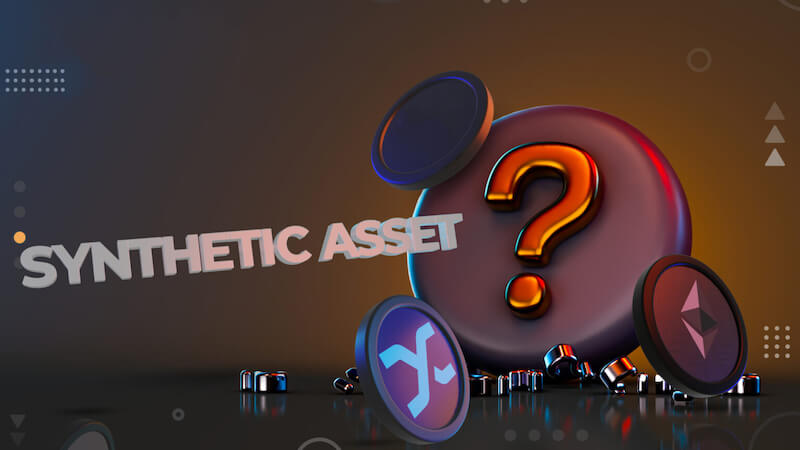In the rapidly evolving world of decentralized finance (DeFi), Synthetic Assets are making waves, transforming how we think about value representation on the blockchain. But what exactly are Synthetic Assets, and why are they so critical to the DeFi ecosystem? This article dives deep into the concept, types, and the pivotal role these assets play in reshaping finance as we know it.
Understanding synthetic assets
Synthetic Assets, often referred to as “synthetics,” are tokens designed to mimic the value of other assets, whether they exist in the physical world, digital space, or even within the blockchain itself. These assets offer investors exposure to a wide range of financial instruments without the need to hold the actual underlying assets. Imagine owning a token that reflects the value of a stock, a precious metal, or even a real estate property—this is the power of synthetic assets.
Types of Synthetic Assets
Synthetic Assets come in various forms, each offering unique opportunities and benefits:
- Real-World Assets (RWA) Synthetics: These tokens track the value of traditional assets like stocks, bonds, and real estate. For instance, synthetic versions of these assets allow investors to gain exposure to the stock market or real estate markets without the need for direct ownership or dealing with physical limitations.
- Fiat and Precious Metals Synthetics: Commonly known as Stablecoins, these tokens replicate the value of fiat currencies (like the US Dollar) or precious metals (like gold). Popular examples include USDT, USDC for fiat, and PAXG, a digital representation of gold.
- Decentralized Stablecoins: Unlike traditional stablecoins, decentralized versions are issued through decentralized protocols such as MakerDAO’s DAI. These tokens are pegged to fiat currencies but are backed by a variety of cryptocurrencies, offering a more decentralized approach.
- Wrapped Tokens: Wrapped tokens are a form of synthetic asset that represent another cryptocurrency on a different blockchain. For example, WBTC (Wrapped Bitcoin) on Ethereum represents Bitcoin, allowing Bitcoin holders to participate in the Ethereum ecosystem.
- Tokenized Derivatives: In some DeFi platforms, derivative contracts can be tokenized, turning them into synthetic assets. These include options contracts on platforms like Opyn, where positions can be converted into oTokens for trading.
- NFT Baskets: Synthetic tokens can also represent a collection of NFTs, allowing for the trading of NFT portfolios with higher liquidity. This concept is still new but shows great potential in the evolving NFT market.
- Yield-Bearing Tokens: These tokens not only track the value of an underlying asset but also simulate the yield generated by that asset. Examples include cTokens from Compound, sDAI, and Liquid Staking Tokens, which accrue interest over time.
How are Synthetic Assets created?
The creation of synthetic assets varies depending on the type:
- Centralized Stablecoins: Tokens like USDC and USDT are minted by centralized companies like Circle and Tether, where the equivalent amount of fiat currency is held in reserve.
- RWA Synthetics: These tokens are typically minted through platforms like Ondo or Centrifuge, where real-world assets are collateralized to issue synthetic tokens. The value is assessed by the platform’s team, ensuring the synthetic token represents the underlying asset accurately.
- CDP (Collateralized Debt Position): A common method for creating synthetic assets, especially in decentralized environments, is through CDPs. Users deposit collateral in the form of crypto assets to mint new synthetic tokens, often in the form of debt positions.
Notable Synthetic Asset projects
Several pioneering projects are leading the charge in the synthetic asset space:
- MakerDAO: Launched in 2014, MakerDAO is one of the earliest and most influential DeFi platforms, enabling users to collateralize assets to mint the DAI stablecoin. DAI is now the third-largest stablecoin by market capitalization, integral to numerous DeFi applications across Ethereum and other EVM-compatible blockchains.
- Synthetix: Synthetix is a liquidity protocol that allows users to mint, trade, and hold various synthetic assets known as Synths. These Synths can represent real-world commodities, fiat currencies, or even other cryptocurrencies. Synthetix has become a cornerstone of the DeFi ecosystem, offering deep liquidity and diverse financial products.
- Alchemix: Alchemix introduces a unique self-repaying loan system, where users can collateralize assets to borrow synthetic tokens like alUSD or alETH. The collateral is then used to generate yield through platforms like Yearn Finance, automatically repaying the loan over time.
Risks associated with Synthetic Assets
Despite their potential, synthetic assets carry inherent risks. One of the most significant is the possibility of “depegging,” where the synthetic token’s value diverges from its underlying asset. This risk is particularly pronounced in low-cap tokens, where market fluctuations can cause significant volatility.
Synthetic Assets are revolutionizing the DeFi landscape, providing innovative ways to interact with traditional and digital assets. As DeFi continues to evolve, synthetic assets will undoubtedly play an even more significant role, offering new financial opportunities and challenges. Whether you’re a seasoned investor or just stepping into the world of DeFi, understanding synthetic assets is crucial to navigating this exciting frontier.
Thank you for joining us. Stay tuned to Blockchain Bulletin Weekly for more useful information.

